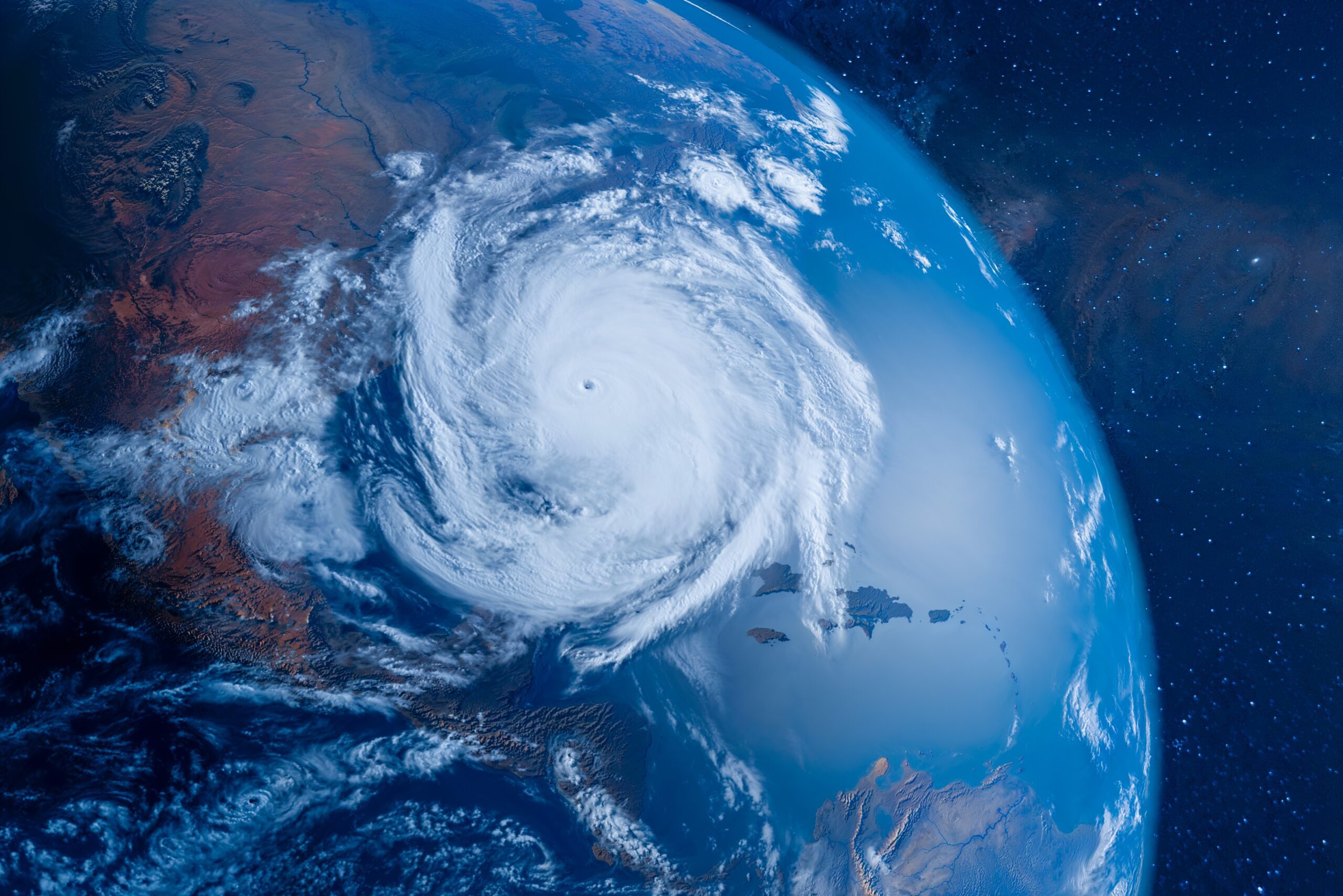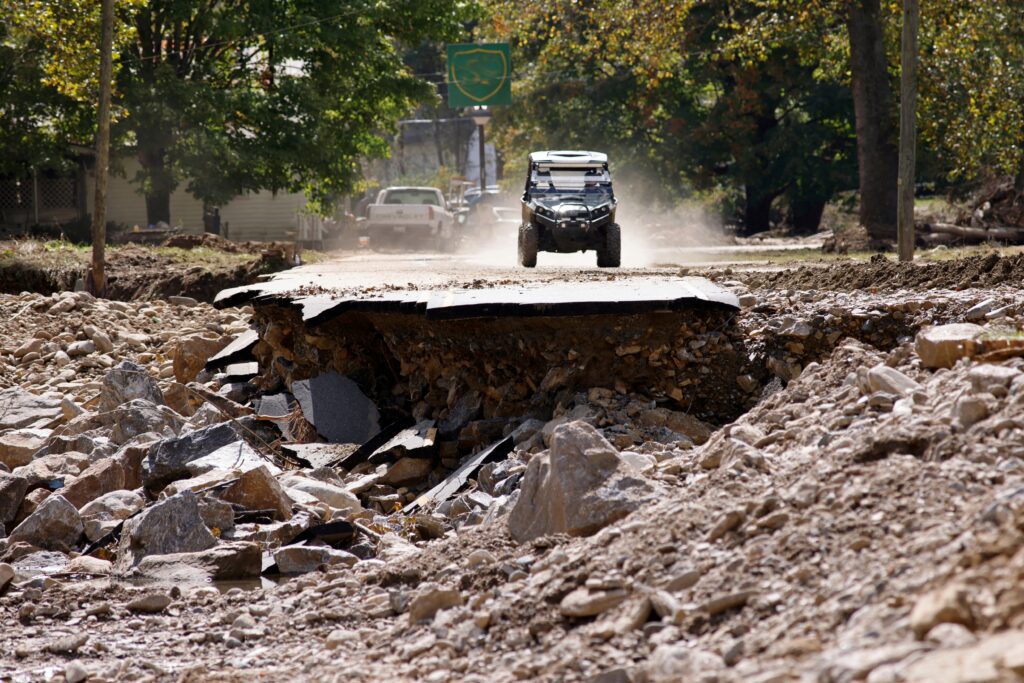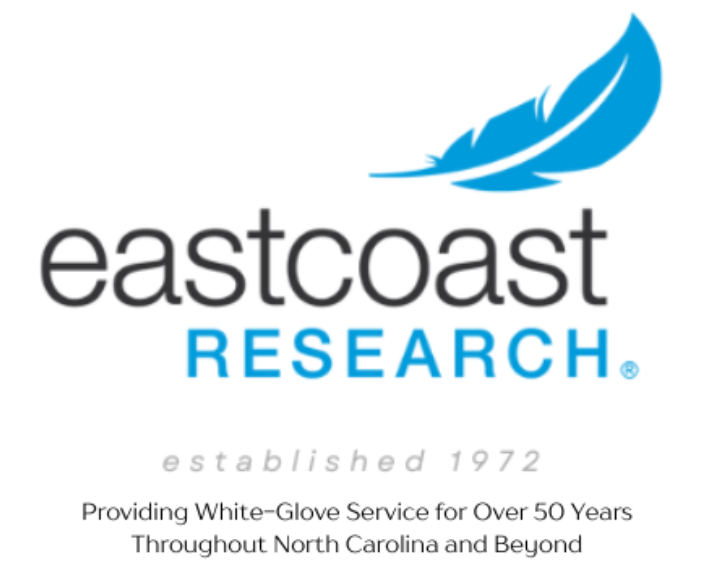
Hurricane Helene reshaped life throughout North Carolina in 2024, leaving behind profound challenges that require precise, ongoing attention. While immediate relief was essential, sustainable rebuilding hinges on targeted interventions—areas where market research delivers critical value.
- Helene made landfall in Florida’s Big Bend as a Category 4 hurricane on September 26, 2024, with sustained winds near 140 mph.1
- The damage was particularly severe in Western North Carolina, where catastrophic inland flooding and landslides devastated communities across Buncombe and Haywood counties.2
- By June 17, 2025, the North Carolina Department of Health and Human Services confirmed 108 storm-related fatalities in the state, underscoring Helene’s historic toll.3
- NOAA’s National Centers for Environmental Information estimates $78.7 billion in U.S. damages from Helene—placing it among the costliest U.S. hurricanes on record.4
- For months, a key transportation artery—Interstate 40 through the Pigeon River Gorge—remained closed, disrupting commerce and delaying critical relief supplies; NCDOT announced a partial reopening effective March 1, 2025 (one lane each direction).5
The Ripple Effects: Economy, Community, and Daily Life
Helene’s impact cascaded through Western North Carolina’s economy. Two of the region’s primary sectors—agriculture and tourism—were hit hardest.
Agriculture
Small-scale farms across WNC endured widespread physical and financial damage. A report by the Appalachian Sustainable Agriculture Project (ASAP) found that 86% of nearly 900 farms experienced physical damage; cleanup and recovery costs averaged $40,000 per farm, and lost sales averaged $30,000 in 2024 with additional losses expected in 2025.6
ASAP further estimated $24.5 million in lost sales across its WNC network due to product loss and closed market outlets.7
Beyond financials, farm soils were heavily scoured and contaminated. For example, One Fortune Farm reported $60,000 in lost produce and fields buried under four feet of sand and sediment—illustrating the long tail of environmental recovery.8
Tourism
Asheville, a cornerstone of the regional tourism economy, saw Buncombe County lodging sales decline 74% in October 2024 and 57% in November 2024 year-over-year.9 Explore Asheville projected a ~70% decline in the visitor economy for Q4 2024—$584M+ in lost revenue across lodging, dining, retail, arts, and transportation.10
Six months later, the DMO documented significant progress and spring reopenings in a dedicated media update.11
Small Businesses
Instead of application counts (which vary by cutoff date and source), the U.S. Small Business Administration provides a verifiable outcome metric: as of April 17, 2025, the SBA had approved $350+ million in federal disaster loans for North Carolina—$205M for businesses/EIDL and $144M for residents.12
Earlier in recovery, SBA also publicly flagged processing delays driven by funding lapses.13
Beyond the numbers, the storm altered how communities functioned. Schools closed for weeks in some areas; parents juggled childcare with unstable work schedules. Supply shortages pushed residents to travel long distances for groceries or fuel, made harder by route closures.14
A Region at the Crossroads
Western North Carolina’s recovery is about more than rebuilding roads and homes—it’s about preserving the social and economic systems that make the region unique.
The area’s economy is deeply rooted in small-scale agriculture, artisan businesses, and tight-knit community networks. These strengths create resilience but also highlight vulnerabilities. Residents in rural and underserved areas often face barriers in accessing traditional aid channels—barriers that, if left unaddressed, can prolong recovery timelines.
Eastcoast Research identified early on that data collection tailored to local realities could help bridge these gaps. Engaging directly with residents ensured that insights reflected lived experience rather than assumptions.
While confidentiality prevents sharing individual stories, aggregated findings revealed recurring themes:
- Limited awareness of available relief programs.
- Urgent need for temporary housing that accommodates families, pets, and accessibility needs.
- Desire for more transparent communication from aid providers.
These insights are already informing local grant applications and targeted recovery programs—proof that when data reflects the community’s voice, recovery strategies become more effective.
Eastcoast Research’s Community-Driven Methodology
Disaster recovery research isn’t just about gathering data—it’s about collecting it in a way that builds trust and ensures participants feel heard. Eastcoast Research designed its approach around trauma‑informed, adaptive methodologies to meet residents where they were, both physically and emotionally.
- Safe, neutral spaces: Focus groups and interviews were hosted in accessible community locations (libraries, town halls, multipurpose centers) to put participants at ease and encourage open discussion.
- Flexible outreach: A mix of in‑person sessions, phone interviews, and secure video allowed participation from rural, hard‑to‑reach, or displaced residents.
- Participant screening and matching: Preliminary surveys identified residents most impacted by the storm and grouped participants with similar experiences, fostering empathy and richer dialogue.
- Trust-building interview flow: Sessions began with general community topics and progressed to sensitive areas (financial loss, mental health, housing instability) only after rapport had been established.
- Bilingual and culturally aware facilitation: Participants could share feedback in their preferred language and in culturally respectful settings, essential for inclusive representation.
This tailored process didn’t just yield richer data—it reinforced agency and confidence. Participants left sessions knowing their voices would inform tangible decisions and resource allocations.
From Data to Decision‑Making
What can this data be used for? The real value emerges when insights translate into practical, fundable steps.
- Prioritize funding requests based on the most urgent, widely shared needs, supported by evidence that resonates with grantors and public agencies.
- Refine outreach and communications so critical messages reach underserved groups via channels they already use (e.g., church bulletins, Spanish‑language radio, SMS trees).
- Redesign relief programs to remove application barriers (documentation, transportation, digital access) and improve equitable delivery.
- Support policy proposals with community‑validated evidence, strengthening legislative and municipal cases for infrastructure and housing investments.
In comparable recovery contexts, aggregated findings have driven mobile service units (food, medical care, information) to rural areas where they outperform centralized aid stations, and hyperlocal coordination hubs that partner with neighborhood leaders to surface needs in real time.
By ensuring insights guide resource allocation, policy priorities, and infrastructure planning, Eastcoast Research helps organizations turn community input into measurable outcomes.
The Mental Health Dimension
While physical rebuilding is visible, emotional recovery often lags—and can quietly erode resilience if unmet.
Peer‑reviewed public health research shows that post‑hurricane communities experience elevated anxiety and depression for months to years after impact; for instance, a CDC‑led assessment documented sustained increases in anxiety and depression in the Florida Keys following Hurricane Irma.15
CDC guidance highlights the importance of tailored, accessible support and clear information pathways.16
Market research adds the “how” behind the “what” by answering:
- Awareness gaps: Do residents know which mental health resources exist and how to access them?
- Barriers: Are stigma, cost, transportation, childcare, or broadband access preventing uptake?
- Preferred formats: Are peer groups, telehealth, or in‑person counseling viewed as most trustworthy and practical?
These insights can reshape program design—for example, rotating rural clinics, bilingual helplines, or faith‑leader partnerships to reduce stigma.
Additional CDC materials on disaster‑related mental health and stress management:
Collaboration as a Recovery Tool
Even the strongest data is only as effective as the partnerships that use it. Eastcoast Research’s work often serves as a bridge between community voices and decision‑makers, helping to:
- Facilitate cross‑sector conversations among nonprofits, municipal agencies, healthcare providers, and local businesses.
- Integrate multiple data sources into a single, coherent recovery framework.
- Embed equity in program design so that underserved populations are considered from the outset.
Connectivity access emerged as a recurring bottleneck in Helene’s aftermath. While Starlink announced free service in affected areas, access still required purchasing a hardware kit—an unexpected cost for many survivors.17,18 Documenting such barriers through community research helps leaders plan realistic solutions (e.g., device lending libraries, Wi‑Fi hubs).
Looking Ahead: Preparing for Tomorrow’s Challenges
Helene’s lessons are already reshaping how Western North Carolina prepares for future crises. NOAA‑linked research indicates that warming is likely to increase average hurricane intensity and rainfall rates, even as overall frequency remains uncertain.19,20 NOAA’s event analysis of Helene also underscores how extreme inland flooding will remain a core risk for Appalachia.21
Eastcoast Research helps organizations move from reactive recovery to proactive resilience through:
- Preparedness stress‑testing: Scenario‑based exercises to surface weak points in evacuation routes, shelter capacity, and communications.
- Ongoing feedback loops: Lightweight, multilingual mechanisms for residents to report evolving needs so programs can adapt in near real time.
- Inclusive planning: Intentional participation by historically underrepresented voices (low‑income, immigrant, rural communities) from the first planning sessions onward.
By investing in these strategies now, communities can shorten recovery timelines, improve equity in relief distribution, and maintain public trust during high‑stress situations.
A Call to Build Back Smarter
Recovery is more than bricks and mortar—it’s about rebuilding livelihoods, restoring trust, and ensuring every voice counts. Eastcoast Research’s work after Hurricane Helene shows that community‑centered market research can guide recovery efforts toward outcomes that are not only effective but sustainable.
If your organization is navigating disaster recovery, resilience‑building, or preparedness planning, Eastcoast Research can be your partner in turning local insights into lasting impact.
Citations
- National Hurricane Center. (2024). Tropical Cyclone Report: Hurricane Helene (AL092024). National Oceanic and Atmospheric Administration. https://www.nhc.noaa.gov/data/tcr/AL092024_Helene.pdf
- National Weather Service. (2024). Hurricane Helene. National Oceanic and Atmospheric Administration. https://www.weather.gov/mrx/Hurricane_Helene
- North Carolina Department of Health and Human Services. (2024). Hurricane Helene mortality and morbidity report. https://www.ncdhhs.gov/helene-mortality-report-morbidity
- National Centers for Environmental Information. (2025). Billion-dollar weather and climate disasters: Events list. National Oceanic and Atmospheric Administration. https://www.ncei.noaa.gov/access/billions/events.pdf
- North Carolina Department of Transportation. (2025, February 11). I-40 gorge reopens after Hurricane Helene damage. https://www.ncdot.gov/news/press-releases/Pages/2025/2025-02-11-i-40-gorge-open.aspx
- Appalachian Sustainable Agriculture Project. (2025). Hurricane Helene impact report: Part 1. https://asapconnections.org/wp-content/uploads/Helene-Impact-Report_-Part-1.pdf
- WLOS News 13. (2025). Farms in Western North Carolina struggle financially after Hurricane Helene. https://wlos.com/news/local/farms-western-north-carolina-hurricane-helene-appalachain-sustanable-agriculture-finacial-struggle-survey-2024-2025
- The Guardian. (2024, October 22). North Carolina farms battered by floods after Hurricane Helene. https://www.theguardian.com/environment/2024/oct/22/north-carolina-farms-hurricane-helene-floods
- North Carolina Hospitality Alliance. (2024). Asheville and Buncombe hotel sales declined 74% in October, 57% in November after Helene. https://nchospitalityalliance.com/asheville-buncombe-hotel-sales-declined-74-in-october-57-in-november-after-helene/
- Explore Asheville. (2024). The High Country Update: November 2024. https://marketing.exploreasheville.com/acton/media/43256/thcunov24
- Explore Asheville. (2025). Six months after Helene: Asheville ready and blooming. https://www.exploreasheville.com/press-release-six-months-after-helene-asheville-ready-and-blooming
- U.S. Small Business Administration. (2025, April 18). Over $350 million in SBA relief approved to help North Carolina rebuild after Tropical Storm Helene. https://www.sba.gov/article/2025/04/18/over-350-million-sba-relief-approved-help-north-carolina-state-rebuild-after-tropical-storm-helene
- WLOS News 13. (2025). Small business disaster loan program runs out of money after Hurricane Helene. https://wlos.com/news/local/small-business-disaster-loan-program-out-money-until-congress-approves-new-funds-helene-north-carolina-sba
- North Carolina Department of Transportation. (2025, February 11). I-40 gorge reopens after Hurricane Helene damage. https://www.ncdot.gov/news/press-releases/Pages/2025/2025-02-11-i-40-gorge-open.aspx
- Centers for Disease Control and Prevention. (2021). Heat-related deaths — United States, 2004–2018. Morbidity and Mortality Weekly Report, 70(26), 1017–1022. https://www.cdc.gov/mmwr/volumes/70/wr/mm7026a1.htm
- Centers for Disease Control and Prevention. (n.d.). Coping with a disaster or traumatic event: Factsheet. https://www.cdc.gov/natural-disasters/communication-resources/coping-with-a-disaster-or-traumatic-event-factsheet.html
- Gizmodo. (2024). Elon Musk’s free Starlink for Hurricane Helene victims will cost at least $400. https://gizmodo.com/elon-musks-free-starlink-for-hurricane-helene-victims-will-cost-at-least-400-2000509345
- WCNC Charlotte. (2024). Free Starlink internet service offered to Hurricane Helene victims. https://www.wcnc.com/article/tech/free-starlink-internet-service/275-5af235b2-5675-46ab-817c-5e338cf2c227
- NOAA Climate.gov. (2023). Could climate change make Atlantic hurricanes worse? https://www.climate.gov/news-features/climate-qa/could-climate-change-make-atlantic-hurricanes-worse
- NOAA Geophysical Fluid Dynamics Laboratory. (n.d.). Global warming and hurricanes. https://www.gfdl.noaa.gov/global-warming-and-hurricanes/
- NOAA Climate.gov. (2024). Hurricane Helene’s extreme rainfall and catastrophic inland flooding. https://www.climate.gov/news-features/event-tracker/hurricane-helenes-extreme-rainfall-and-catastrophic-inland-flooding





